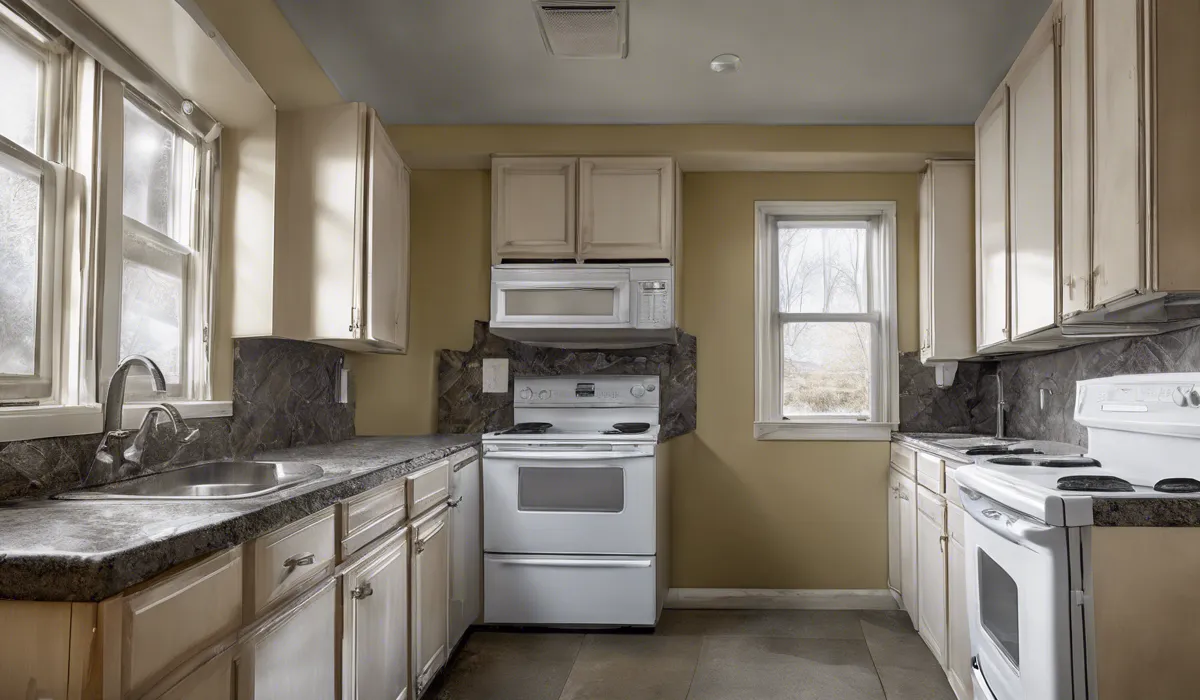To check for mold in an apartment, inspect areas prone to moisture like bathrooms and kitchens. Look for discoloration, black or green spots, and musty odors. Examine under sinks, around windows, and walls for visible signs. If suspected, consider a professional mold test.
Identifying Potential Mold Hotspots in Your Apartment

Understanding What Mold Is
Mold is a type of fungus that can grow both indoors and outdoors. It thrives in warm, damp, and humid conditions, and spreads by releasing spores into the air. When these spores land on wet surfaces, they can grow into mold.
Mold is not only unsightly but can also cause health issues, especially for those with allergies or asthma. It’s important to keep your living space mold-free for a healthy environment.
Why Mold Is a Problem?
Mold can damage your belongings and the structure of your apartment. It can cause wood to rot, weaken drywall, and ruin fabrics.
Health-wise, mold exposure can lead to respiratory problems and allergic reactions. This is why spotting it early and taking action is crucial.
Common Areas Where Mold Is Found
Mold commonly appears in areas that are prone to moisture. Your bathroom, kitchen, and basement are the usual suspects.
In these places, mold can pop up around leaky pipes, in tile grout, and along damp walls. It’s good practice to regularly check these spots for any signs of mold.
Signs of Mold Presence
Be on the lookout for a musty odor, which is often the first clue that mold is present. Visible signs include black, green, or white growths on surfaces.
Water damage on walls or ceilings can also indicate mold is not far behind. If you notice any of these signs, it might be time to inspect more closely.
Conducting a Thorough Mold Inspection

Preparing for the Inspection
Before you begin your inspection, make sure you have the right safety gear such as gloves, a mask, and goggles.
It’s best to inspect during daylight for better visibility. Gather tools like a flashlight, screwdriver, and a moisture meter to help you find hidden mold.
Step-by-Step Guide to Inspecting Each Room
Start your inspection in areas where water is used, like the bathroom and kitchen. Check under sinks, around toilets, and near appliances for any signs of mold.
Move to other rooms, examining walls, ceilings, and floors. Don’t forget to look inside closets and behind doors.
What to Look For?
Keep an eye out for discoloration on surfaces, which can be a telltale sign of mold. Peeling paint or wallpaper can also indicate moisture issues and potential mold growth. Notice any areas with condensation, as this moisture can encourage mold to form.
Tips for Identifying Hidden Mold
Mold loves to hide, so be sure to move furniture and lift carpets to check underneath. Use your tools to remove outlet covers and inspect inside walls.
Pay attention to any musty smells as you move around; this can lead you to hidden mold sources.
Professional Mold Assessment and Remediation

When to Call a Professional?
If you find a large area of mold or feel any health effects, it’s time to call in the experts. A professional can handle extensive mold problems safely and effectively. They’re especially important if you have a weak immune system or respiratory issues.
What a Professional Mold Inspection Involves?
A professional will do a thorough inspection, often using advanced tools like infrared cameras. They’ll take samples of the mold to identify the species and determine the best course of action for removal.
Understanding the Remediation Process
Remediation involves several steps to ensure the mold is not only removed but also prevented from returning.
Professionals will set up containment areas to prevent spores from spreading and then remove the mold using special techniques and cleaners. After removal, they’ll take steps to address the moisture problem that allowed mold to grow.
Ensuring Mold Does Not Return
After mold is removed, it’s important to take preventative measures. This can include repairing leaks, improving ventilation, and maintaining a consistent cleaning schedule. Keep an eye on previously affected areas to catch any potential mold growth early.
FAQs About Checking for Mold in an Apartment
Where should I look for mold in my apartment?
Inspect areas that are prone to moisture, such as bathrooms and kitchens, particularly under sinks, around windows, and on walls, for visible signs of mold like discoloration, black or green spots, and musty odors.
What are the visible signs of mold in an apartment?
Visible signs of mold include discoloration on surfaces, black or green spots, a musty smell, and sometimes a fuzzy growth on walls or other surfaces.
How can I tell if a musty odor in my apartment is due to mold?
A musty odor could be a sign of mold, especially if it’s coming from areas with high humidity or water damage. If you notice such an odor, inspect for visible mold signs or consider a professional mold inspection.
Can mold be hidden in an apartment, and if so, where?
Yes, mold can be hidden. Check behind furniture, under carpets, inside HVAC systems, and within wall cavities, especially where there has been water damage or leaks.
When should I consider a professional mold test for my apartment?
Consider a professional mold test if you notice signs of mold but cannot find the source, if the affected area is large, or if you or your family have health concerns that may be related to mold exposure.
Final Thoughts
When checking for mold in your apartment, focus on moist areas such as bathrooms and kitchens.
Be vigilant for discoloration, spots of black or green, and musty smells. Inspect spots under sinks, around windows, and on walls. If mold presence is suspected, it’s advisable to get a professional assessment to confirm and address the issue.
